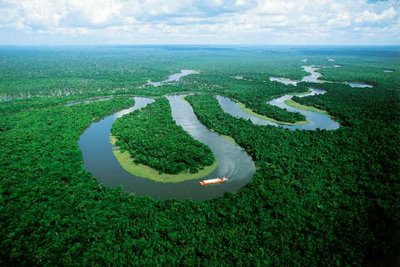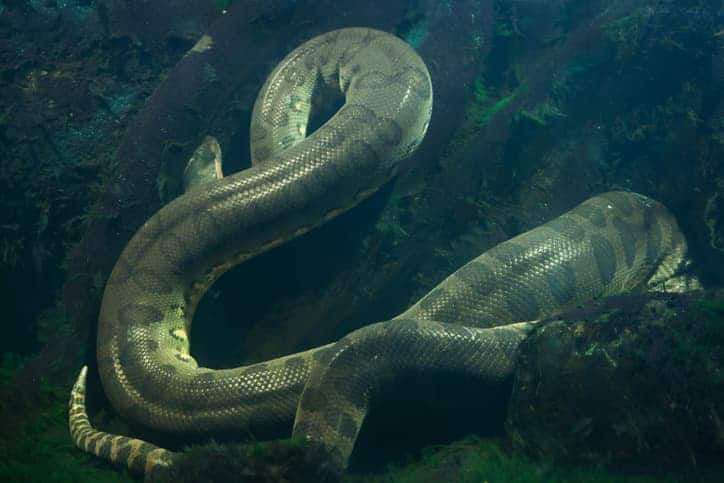The Amazon River is the largest globally due to its sheer volume of water and extension.
You can find The Amazon River in the north of South America. The origin of river is in the Miami Snow Mountain, found high in the Andes Mountains of Peru.
By reading this article, individuals will discover remarkable things about the Amazon River. The direction it flows? Is swimming or diving allowed? Dangerous areas to avoid and creatures found in the river.
Can You Swim In The Amazon River?
One thing that does not come to mind when you think about the Amazon River is swimming. However, it is one of the most diverse and exciting swimming locations worldwide, with numerous lagoons, lakes, and beaches along its 6992 kilometers or approximately 4,345 miles in length. You can read many more facts about the Amazon river here.

The difference between the beaches along the Amazon River and the rest of the country is that it is fresh water and not salty. Generally, the rule is that anyone can swim in the Amazon River, but never by themselves.
The river is quite dangerous and prone to safety accidents, from severe infections to drowning to attacks by river creatures. In some regions of the Amazon River, there is no life-saving equipment or life-saving personnel nearby.
Listen to the advice of the locals and stay away from isolated areas. Swimming should be done with professionally trained tour operators, who guide visitors to the best sites for bathing.
Read Also: Can You Swim In The Great Salt Lake? (Must Read)
Best Places To Swim In the Amazon River
There are many options for you to enjoy what Amazon can offer. Let’s see some great locations that can deliver all of it.
A top-rated beach is the Alter do Chão, located not too far from Santarém, Pará. In 2009 it was selected as the best beach in Brazil[source].
The Lua and Ponta Negra beaches in Manaus are superb for watching the sunset. Individuals can also try Praia do Açutuba in Iranduba, but they must cross the Rio Negro Bridge to get there.
Other well-known beaches include: Praia do Tupe, Praia da Lua, Dourada Beach, Ponta das Lajes Beach, Ponta Negra Beach, and Japonês Beach.
The following are locations along the Amazon River’s basin that are quite suitable for swimming.
Rio Negro
Located in Brazil, this is a mighty black river, famous for being the largest in the world. Numerous swimming spots are along the route of the river. Even though the water flows quickly, there are still places to take a dip. It is a requirement to wear floatation equipment to take this plunge.
Rio Tapiche
Found to the east of the Ucayali River in Peru, passing through some of the most untouched sections of the Amazon Rainforest.
Jaú National Park
Yet, another perfect section of the Amazon River for swimming. Not just for fun, but swimming with dolphins, during guided river tours. Jaú National Park is the largest forest reserve found in South America[source]. There is a relatively large population of river dolphins.
Novo Airão
The second location for individuals to come up close and personal with the Amazon pink river dolphins or Botos. The area around this water is underdeveloped but increasing in popularity steadily.
Scuba diving is also possible in the massive 330 feet deep river, despite the poor visibility of the water and the dangerous creatures lurking under the surface.
Creatures In The Amazon River

Besides swimming with dolphins on these beautiful beaches, there are other creatures with deadlier traits that you will be swimming alongside.
There are Red-Bellied Piranhas (known for hunting and flesh-eating characteristics), Payara or Vampire Fish, a predatory fish, and the Pirarucu or Arapaima (a gigantic flesh-eating fish) that have armored scales.
There is also the tiny but terrifying Candiru. A parasitic catfish that swims up any opening of humans, including the urethra. So watch how you pee in the river.
Bull Sharks are another terrifying fish swimming in the Amazon River. Meeting one of these in the water will be nothing like swimming with the dolphins. They are known for attacking humans.
Fish are not the only dangers lurking in the depths of the Amazon River. There is also the Green Anaconda, a giant snake. Although not poisonous, this constrictor is quite deadly. Legend states that Giant Anacondas exceeding 40 feet roam the Amazon, but this is a myth[source].
Next is the Black Caiman, one of the most significant Crocodilia and Alligatidae family members. It can take down any animal that ventures into its strike range, including humans.
The Electric Eel can deliver an electric shock when threatened. Attacks on humans are rare but still exist.
Mammals should be feared as well, especially the Giant Otter. They are the most prominent members of the weasel family. These carnivorous animals hunt in groups and are known to take down Anacondas.
Read Also: Can You Swim In The Dead Sea? (Benefits & Dangers)
Amazon River Legislation For Swimming
The Amazon River is the most biologically diverse ecosystem on the planet, and it flows easterly, passing through Peru, Ecuador, Colombia, Venezuela, Bolivia, and Brazil[source].
The Atlantic Ocean is where the river empties at the end of its journey. Along the river’s route are several tributaries, for example, the Negro, the Madeira, and the Japura, and miles of tropical rainforests.
There are no government-enforced safety laws focused directly on swimming or bathing in the Amazon River. Individuals wishing to do so do it at their own risk.
The legislation mainly relates to deforestation, pollution, damming, and poaching.
The tour operators provide visitors with safety tips for the area of the Amazon River they are on. Some places require the use of life vests and other floatation devices.
Safe Places To Stay In The Amazon
Professional tour guides and operators will guide visitors to safe places to swim in the Amazon.
These operators are booked directly from hotels along the river and offer a safe, guided experience.
The Amazon River has numerous places to stay depending on the section of the river you wish to visit. Here are a few choices from the main gateways of the river, Brazil, Peru, and Ecuador.
Manaus, Brazil
Manaus provides the opportunity to view the river in all its glory. This section of the river, it measures 10 kilometers in width, allowing visitors the chance to admire its sheer size and scale.
At this junction, individuals can also witness the merging of the Rio Negro and Rio Solimões. A spectacular view of two strikingly different rivers that do not blend immediately.
Puerto Maldonado & Iquitos, Perú
These two gateways in Peru offer access to national parks and the opportunity to experience the jungle by staying in a lodge or on guided river tours.
Travel to the Peru section of the Amazon is faster and cheaper than Brazil’s. Peru also boasts the largest parrot clay lick in the world. Hundreds of beautiful parakeets, macaws, and other bird species descent during dawn to feed on the minerals.
Coca, Ecuador
Visitors to Coca can enjoy staying close to two reserves, Yasuni National Park and Cuyabeno Wildlife Reserve.
As many as 600 bird species live here, representing approximately a third of the birdlife found in the Amazon.
Waterfalls Of The Amazon River
Other breathtaking places along the Amazon River are the waterfalls. Of which Amazon boasts plenty. The most notable is the Salto Angel Waterfall in Venezuela, the Iguazu Falls in Brazil, and the San Rafael Waterfall in Ecuador.
- Salto Angel Waterfall is considered the tallest waterfall in the world. It is taller than Niagara Falls at 2,937 feet. The best view of the falls is Canaima Lagoon, a white sandy beach that is awesome for swimming.
- Iguaza Falls creates a liquid border separating Brazil and Argentina. There are approximately 275 smaller individual falls, which trickle during the dry season. The falls stopped in 1978, during May and June[source].
- San Rafael Waterfall lies at the foot of an active volcano known as the Reventador. Take caution when taking the pathway that leads to the bottom of the falls.
Threats To The Amazon River (Please Read)
The Amazon River faces a flood (pun intended) of threats from large-scale deforestation, pollution from mining, commercial fishing, damming, ranching, and logging.
Cattle ranching and its associated activities are the most significant contributors to deforestation. Overfishing and damming affect aquatic habitats and the population of fish.
Solutions to these threats include: ensuring mining companies adhere to strict environmental laws. Before approval, hydroelectric projects must have ecological impact assessments.
Implement commercial fishing regulations and quotas and introduce livestock and crops that do not require massive land usage.
Read Also: Can You Swim In The Salton Sea? (It’s Dangerous)

Michael is heavily inclined towards traveling to natural places and documenting cultures/people from different parts of the world. He also loves hiking and camping and is spirited toward all outdoor activities. He will share his passion for outdoor life and brands or products we use outside our homes. He has good research skills, and that’s why you can see why his articles are packed with info that is factual and not readily available. He also has the vision to travel the whole world and share it with all readers of Outdoor Favor.

